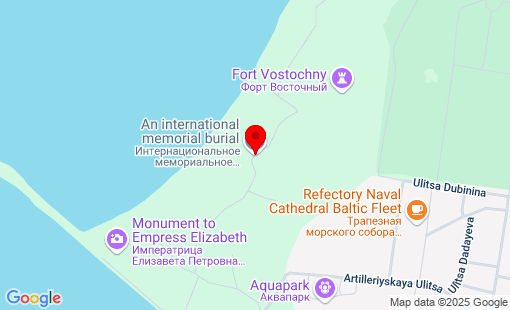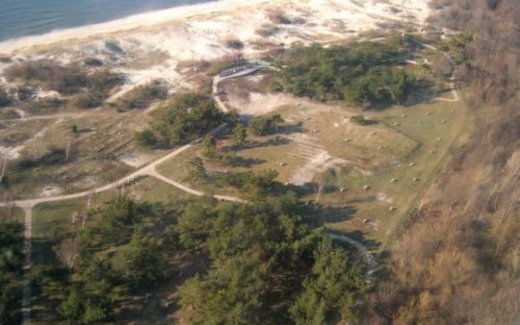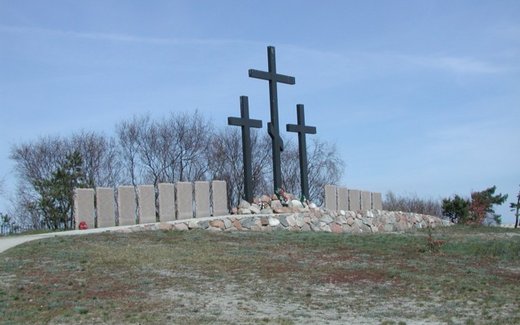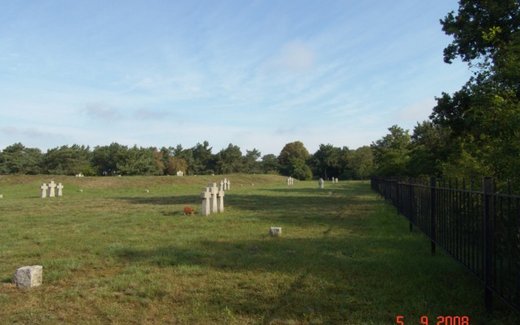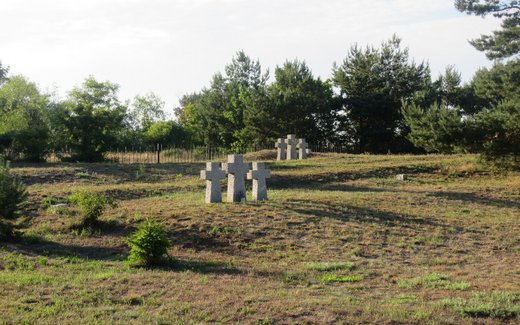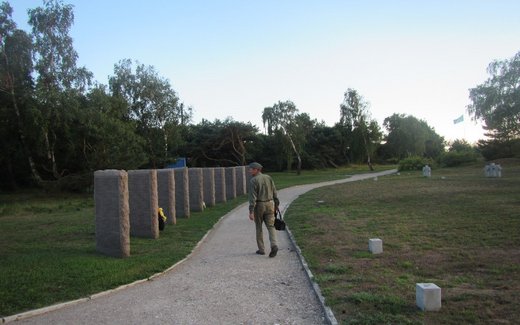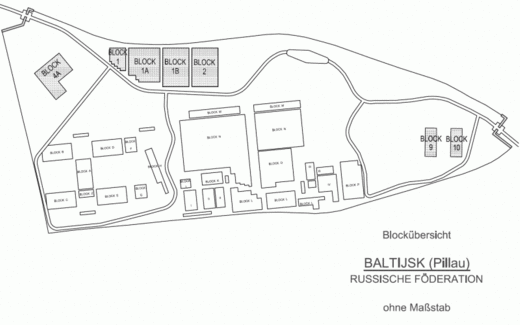The Baltiysk war cemetery can be reached from Kaliningrad (Königsberg) via the A 193 in the direction of Primorsk (Fischhausen) and Baltiysk (Pillau). Baltiysk is the outer harbor of Kaliningrad and is located in a restricted military area. The cemetery can only be visited with a special permit. A footpath leads from the Nordermole parking lot through the dunes to the war cemetery, which was dedicated on August 20, 2000.
Cemetery description
During the final months of the Second World War, 7,452 dead were laid to rest at the Nordmole war cemetery. Following approval of a building application submitted in 1996, the cemetery was completed in 2000 and consecrated on August 20 of that year. Since 1997, over 4,800 bodies have been laid to rest. The site serves as a collective cemetery for the area of the Vistula Spit from the Polish border to the vicinity of Pawlowo (Lochstädt). in 2015, 12,428 war dead were buried here, including Austrians, Poles, French, Russians, Czechs, Hungarians, Dutch, Italians, Romanians and other citizens who fought in German units or under the German flag. The cemetery is located in a dune landscape and is planted with marram grass, beach roses and pine trees. The central point is the memorial square with high crosses. Stelae immortalize the names of 5,238 dead. A list of the war dead buried here, who are known by name, is displayed in a strikingly designed Volksbund container. In the early 1990s, employees of the Volksbund found many graves in the cemetery that had been opened by grave robbers. Today, the site is in a well-kept condition. The German-Russian War Graves Agreement of December 16, 1992 regulates the cooperation between the Russian Federation and the Federal Republic of Germany in the field of war graves care. The German government provides millions of euros annually for the maintenance of the 3,600 war gravesites, where around 760,000 citizens of the former Soviet Union are buried. In return, the government of the Russian Federation allows the Federal Republic of Germany to prepare and maintain German war graves and war cemeteries in the Russian Federation at its own expense.
History
From January to April 1945, the former province of Samland was the scene of fierce rearguard action between German troops and the Soviet army. In February 1945, German soldiers fought to clear the connection between Königsberg and Pillau, suffering immense losses. Pillau was the port of escape to the west for civilians and military personnel. After the capitulation of Königsberg on April 9, 1945, the situation worsened again. The streets clogged with fugitives made it almost impossible for the troops, who were still ready for action, to move.
Special feature
204 war dead who perished in the sinking of the "Wilhelm Gustloff" on January 30, 1945 are also buried at the Baltiysk war cemetery. The former cruise ship of the "German Labor Front" - now a hospital and refugee ship - was carrying over 10,000 passengers. Only a few hundred of them were soldiers, the rest were mostly women and children. On the way from Gotenhafen to Kiel, a Soviet submarine sank the ship. Only 1,239 passengers survived.
